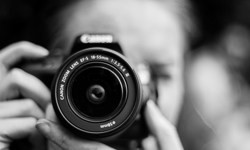
Yesterday, I donned my galoshes and waded up to the British Library to catch the ‘Breaking the News’ exhibition (which is supported by Newsworks) before it closes on Sunday.
The exhibition looks at the way news has been reported over the last 500 years, with lots of original material on display (including the earliest surviving printed news report – reporting the Battle of Flodden in 1513 – and the remnants of the computer the Guardian used to store the Edward Snowden leak, which was destroyed on government orders). Issues such as sensationalism, objectivity and ethics, along with an examination of what constitutes “newsworthy” are all explored.
A few of the many things that stood out for me:
- The power of pictures. The Independent’s powerful and shocking front page of 5 September 2015 showing the lifeless body of three year old Syrian refugee Alan Kurdi, washed up on the shores of the Aegean, probably did more than the proverbial thousand words to humanise the tragedy of the Syrian civil war.
- The bravery and ingenuity of underground news producers and distributors. Between 1942 and 1944, a small group of people in occupied Guernsey published a daily news sheet – GUNS (Guernsey Underground News Service) – transcribing BBC radio bulletins on to ultra-thin paper used for packing tomatoes. The news sheets came with the instruction to ‘burn after reading’. Five GUNS distributors were deported to concentration camps for their efforts.
- The power of investigative journalism. In 1885, W T Stead, editor of the Pall Mall Gazette and regarded by many as the forerunner of modern tabloid journalism, published a sensational four part series on child prostitution, entitled ‘The Maiden Tribute of Modern Babylon’. The series was salacious, incredibly successful commercially and lead to Stead being jailed for three months for some of the methods he used. More importantly, however, the series played an important part in the raising of the age of consent for girls from 13 to 16.
Another example where imagery trumped the written word was the traumatising newsreel footage of the liberation of the Buchenwald and Bergen-Belsen concentration camps in 1945 which brought home to people the reality of Nazi atrocities. That newsreel will have helped stymie the efforts of future holocaust deniers.
The above gives just a small taste of what is an extensive and wide ranging exhibition. It’s well worth a visit, but remember, it closes on Sunday…
You can catch James Evelegh’s regular column in the InPubWeekly newsletter, which you can register to receive here.












